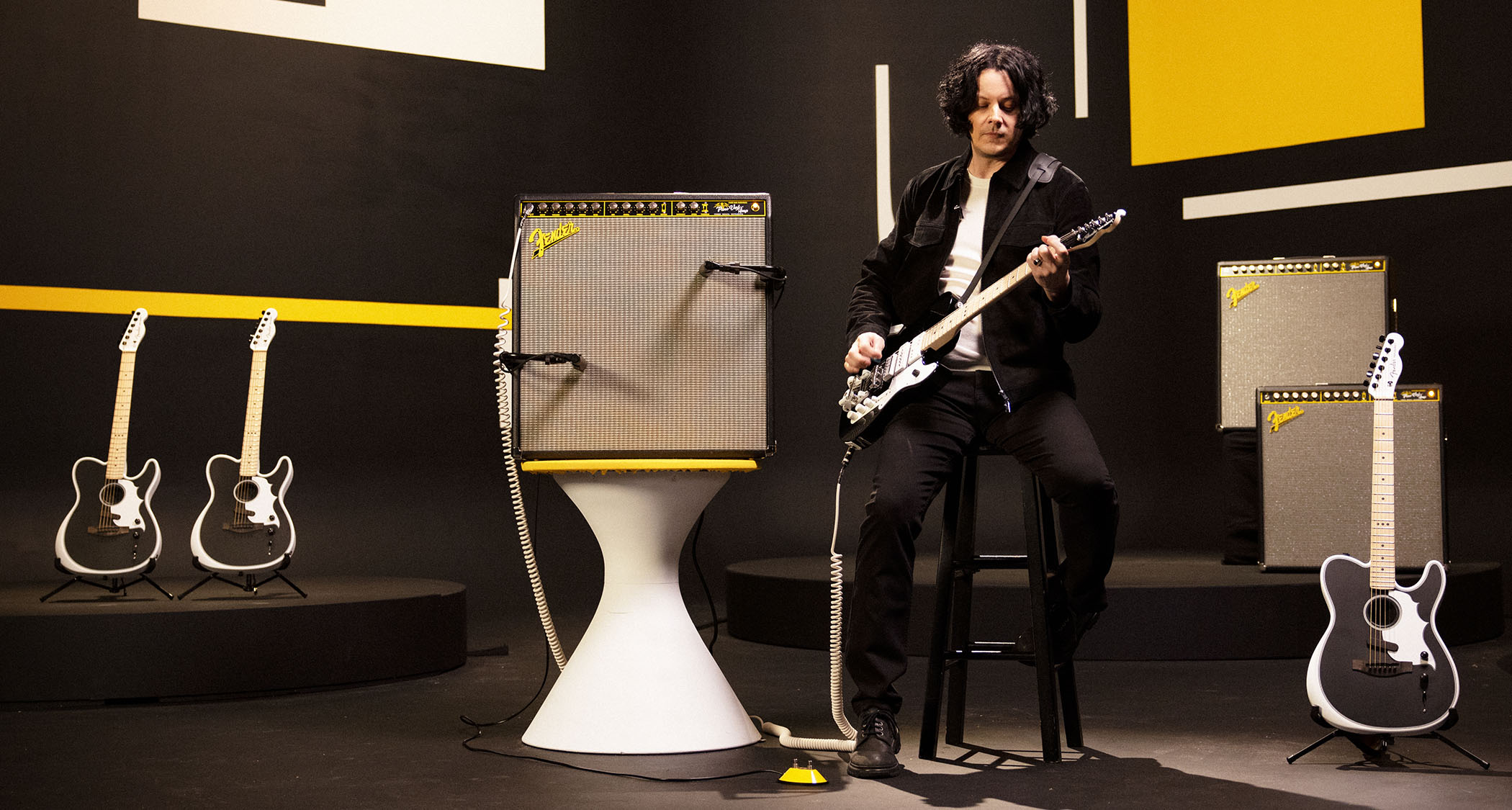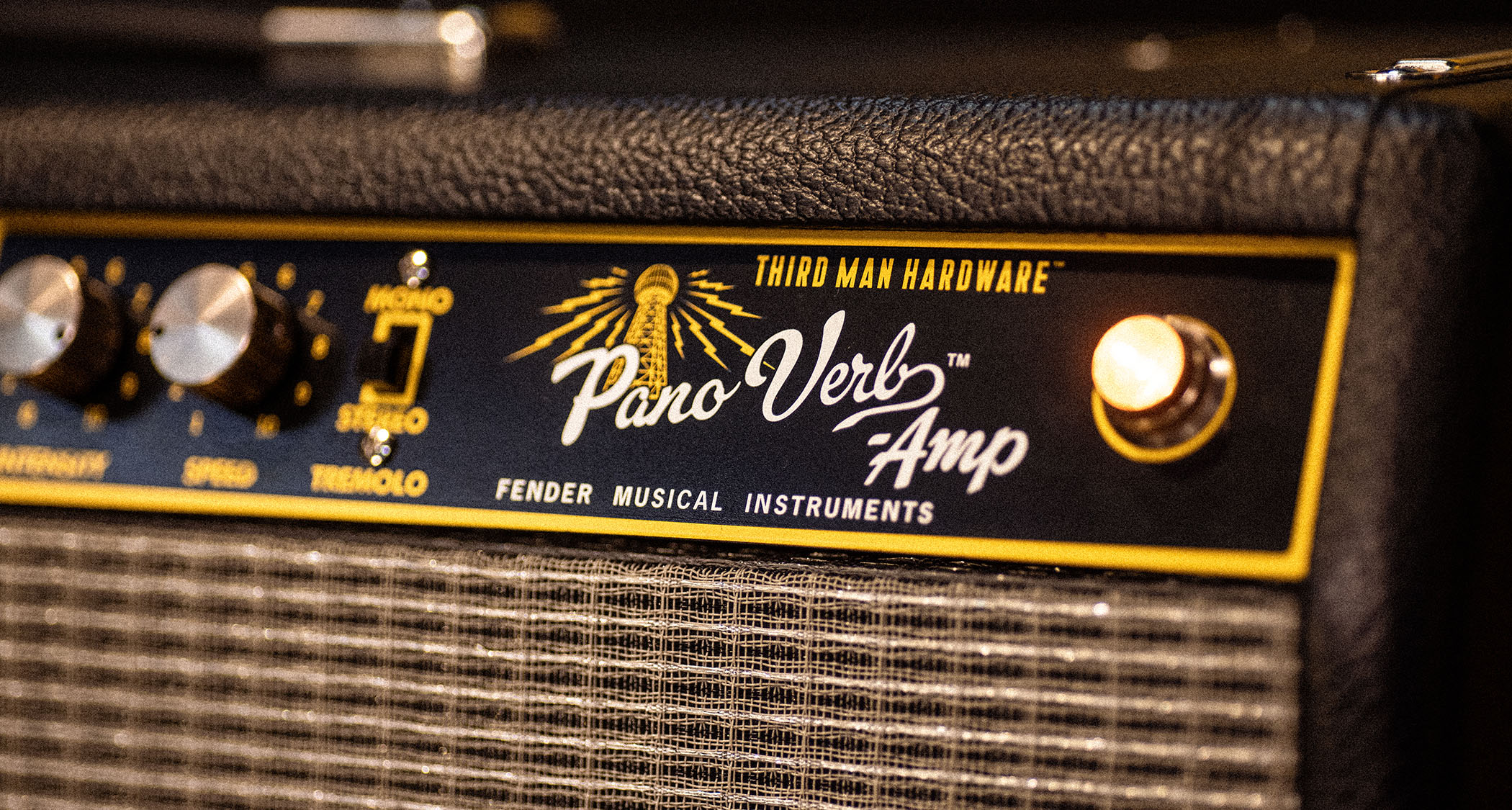“The engineer was so happy with the sound, he was not even mad about it. You know if an engineer likes a piece of gear, it must be pretty good”: Jack White says his new Fender amp sounded so good that he rerecorded half of the guitars on No Name with it
The Pano Verb's weird and wonderful concoction of tube amp mojo, 10" and 15" speakers, reverb and tremolo, had White so excited that he ripped up the No Name recording schedule

Jack White was half-way done recording his latest studio album, No Name, when a courier turned up with a box that he had been waiting on for the best part of five years. It was the Pano Verb, his new signature tube amp that he co-developed with Fender – and for some time wondered if he would ever see it finished. But here it was.
The amp’s arrival changed the course of the record. Speaking at an event hosted at Fender’s flagship retail store in Harajuku, Tokyo, White explained some of the finer points of the Pano Verb’s design, the inspiration behind it, and why it was so perfect that it was worth tearing up the recording schedule. In short, this amp was too good not to use.
“Well the funny thing was… I didn’t get ahold of it until we were halfway through the recording the no Name album,” says White. “So, when we got it, it sounded so amazing and perfect, I rerecorded all the guitar parts on the album with the amp [Laughs].”
Fender’s interlocutor for the event can’t believe it. Surely, that’s an exaggeration. White is humouring them. Who even does that?
“I’m not kidding. That’s exactly what we did,” says White. “And the engineer was so happy with the sound, he was not even mad about it, ‘cos it was just outstanding. And you know if an engineer likes a piece of gear, it must be pretty good, because they’re pretty negative guys!”

White duly took a second pass at his electric guitar tracks, redoing them through the Pano Verb, and it might also have been a moment to reflect on those days when he thought – maybe – that he wouldn’t ever see this amp. At least that is how it felt when it was being developed.
It was about four or five years of working on this, and that was kind of hard for me, because I usually do things pretty quickly
“It was about four or five years of working on this, and that was kind of hard for me, because I usually do things pretty quickly,” says White. “They said, ‘Hey, Fender’s a large ship to turn it around. It takes a long time to get things done perfectly, make sure it’s safe for people with electricity and all that. But also, because that is just testament to Fender wanting to make a quality product.
Want all the hottest music and gear news, reviews, deals, features and more, direct to your inbox? Sign up here.
“The funny thing, though, it took so long for me to actually get one in my hands again. We had the prototype, and I had that, but I had to give it back. Every time I would see the guys from Fender put it back in the car and close the door. I would always joke and say, ‘…And I never saw it again.’ I’m gonna be telling my grandkids, ‘I designed an amp for Fender one time. It was incredible. Man, believe it. I swear, I had in my hands. I held it in my hands!’”
The Pano Verb is one of the most interesting and exciting guitar amps – tube, digital, or solid-state – that we have seen in recent memory. It’s kind of an oddball that could be described as a hybrid of a Fender Twin Reverb, a ‘61 Vibrosonic and an old Silvertone amp that would often be found on White’s backline.
It is loaded with a 10” and a 15” speaker and that allows you to do some very interesting things across the stereo spread. It was an idea that came to White a while back when an engineer explained to him that putting a recording microphone in front of both speakers of a Twin Reverb was a waste of time.

“He goes, ‘Well, they are gonna sound exactly the same.’ I said, ‘Oh, okay, I never actually thought about that, of course! Right.’ So now it was an idea of having two speakers that have two different sizes, with two different tonal elements, so that if you did a double mic it, you could have two different sounds and get a better stereo image,” says White. “And that progressed to allowing the ability – I’m going to jump ahead here on the reverb part – about splitting the reverb, so that the reverb could only come out through the 10-inch speaker and not the 15, so you got the low-end crunch and the higher end 10-inch with reverb on it that’s just a beautiful stereo image when you pan it.”
White admits that the reverb section, with its Split and Full modes, the latter with reverb on both speakers, is his favourite thing about the amp.
In this tremolo section, the greatest thing about it is we have a stereo mode, so instead of just both speakers going up and down in volume, they do a little bit of a little bit of delay stereo panning
But what the Pano Verb does with the tremolo is pretty cool, too. It has a harmonic tremolo inspired by White’s 1961 Vibrasonic and it allows you to it in mono or stereo.
“The normal tremolo you’d see in most Fender amps has amplitude modulation, where the volume is going up and down,” explains White. “On this, we put a harmonic tremolo, which means it’s more like you are turning the high and low-pass filters up and down. So almost in the wah-wah world, the Uni-Vibe world.
“And in this tremolo section, the greatest thing about it is we have a stereo mode, so instead of just both speakers going up and down in volume, they do a little bit of a little bit of delay stereo panning, so if, again, if you have this stereo mic’d, and you pan it, it just gives this amazing movement.”
He’s not wrong. Check out the full interview above. White walks through the other models in Fender’s Jack White collection, and explains why you shouldn’t just buy Triplecaster because you want the signature guitar that helps you nail his sound. This is more than that.
“I mean, that’s the key thing I want to stress,” says White. “This guitar wasn’t being about, like, getting the Jack White sound. I was trying to design a tool that other people could use and and make their own sounds with it.”
Jonathan Horsley has been writing about guitars and guitar culture since 2005, playing them since 1990, and regularly contributes to MusicRadar, Total Guitar and Guitar World. He uses Jazz III nylon picks, 10s during the week, 9s at the weekend, and shamefully still struggles with rhythm figure one of Van Halen’s Panama.
You must confirm your public display name before commenting
Please logout and then login again, you will then be prompted to enter your display name.



